Ice Cream, Appliances, and Autonomy: Rural Electrification Project Lights West Bank Village
(Read about a tragic update followed by positive outcome for Jubbet a-Dhib microgrid in updates below original post, which was first published April 28, 2017)
On a recent trip to Palestine, I had the opportunity to meet with a long-time HOMER Energy customer, Comet-ME, an Israeli-Palestinian NGO bringing off-grid solar power to villages in “Area C” of the Occupied West Bank. The organization’s Elad Orian and Tamar Cohen took me on a tour of a new project in the village of Jubbet a-Dhib. The Jubbet a-Dhib microgrid project was funded by the Dutch Foreign Ministry, which gave about half a million shekels ($140,000) for materials and supplies.
Women run day-to-day life in the village of Jubbet a-Dhib, a cluster of stone buildings housing 40 families. During daylight hours, few men are in sight: They leave in the early morning hours to cross the pedestrian-only Checkpoint 300 to Jerusalem (a mere 20-minute drive from the village), on the other side of which they wait for day labor opportunities with Israeli contractors. They come back well after dark. Because of this reality, in this village it is the women’s committee that took on this electrification project in partnership with Comet-ME.
Unlike energy poverty in the developing world, geography plays no part in Jubbet a-Dhib’s situation, which is created wholly by politics. The reality for Palestinians living in areas designated “Area C” is a lack of infrastructure and basic services accorded nearby Israeli settlements. Providing power to Palestinians living in “Area C” is Comet-ME’s mission. Most of the NGO’s projects are in rural villages spreading out over a larger geographical area than Jubbet a-Dhib, with inhabitants often living in tents or in caves. Jubbet a-Dhib has a semi-urban fabric and a somewhat different set of energy needs. Despite this, Comet-ME realized — after the organization’s first meeting with the women’s committee — that this partnership could be a perfect formula for a successful solar microgrid project.
Rural electrification ‘revolutionary’ for women
The committee was highly motivated to have this project come together. Although everyone benefits from electricity — which brings a connection to the outside world through television, phones, and computers — electrification is revolutionary for village women, because refrigeration, washing machines, and other cooking and cleaning appliances literally save them from hours of work each day.
The committee’s main objectives (in particular electrification) are far from selfish, however.
“They want their village to be self-sufficient and not reliant on nearby towns for basic needs,” explains Cohen, Comet-ME’s organizational development manager. “They also hope to bring people back to the village, where lack of power has been driving young people to other locations. Their third goal is to instill in their children a sense of pride in their community.”
As we arrived for our tour, women’s committee members began to come out of their homes to greet us. The first brought out a tray of tea with fresh mint leaves and cookies. The second woman began walking toward us with another tray of tea, and when she saw that we already had some, returned with a tray of tiny cups brimming with cardamom-spiced Arabic coffee. At each home we visited, women brought us a gift of food or beverage, exemplifying the incredible generosity and welcoming culture of Palestine.
After funding for the project was secured, it took about eight months to get from planning (using HOMER Pro) to implementation. Supplies were trucked in, a challenge with the steep, winding roads. In fact, the batteries (weighing approximately 500 lbs each) were delivered in a truck that just couldn’t make the climb. Two trucks were dispatched to the bottom of the hill, where villagers and volunteers transferred the cargo by hand — and once in the village, into the custom-built electricity building.
Jubbet a-Dhib microgrid brings 24/7 power
The solar array (30 kWp) is located on leased land next to the village mosque and kindergarten. Directly beside it is the electricity building. One room holds the battery bank, which consists of 2 strings of BAE solar gel batteries 3000AH at 48V (a total of 288 kWh). Next door, three SMA 8 kW Sunny Islands inverters bring power to the batteries and homes from the SMA Sunny TriPower 25 inverter.
The women’s committee was eager to show us how power has changed their lives. First, they took us to the community room, where once a week Red Crescent provides a health clinic. I started to take photos, and the women urgently pointed to the corner. I was confused, then realized they wanted me to photograph the few simple medical instruments they could now use for the first time.
Before this project brought 24/7 power to Jubbet a-Dhib, the village only had 3 hours per day of diesel-generated power. Not only was the diesel fuel expensive, its fumes were noxious to residents. As part of this project, the diesel generator was refurbished and serves as the system backup. Currently, it runs for 10 minutes a week for maintenance only, so the system is capable of operating on 100% solar. However, depending on power demands, the diesel generator can also be used as an energy source in the future.
HOMER models bring specifications into focus
Power demands and use constituted a large part of the project’s planning process. This village and situation were different than the ones Comet-ME has been doing up to this point, and because there was no detailed consumption data for this situation and thus the system was based on many unknowns, the organization took a two-pronged approach to its success. First, Comet-ME worked closely with the women’s committee to ensure it understood the community’s needs as well as to set realistic expectations for the project. Second, it relied on HOMER Pro, which Comet-ME uses to model all its installations, to ensure the system would be efficient, sustainable, and properly sized.
As we walked to the next building, the women explained that one of their most exciting new appliances was a milk churn for making Palestinian Labne, a type of drinkable yogurt popular in Palestinian cuisine. Before the microgrid, making Labne was an hours-long, labor-intensive process of mixing and shaking by hand. The women expressed so much joy that I pictured an industrial-sized machine “churning out” Labne. We went up a set of stairs to an immaculate and otherwise empty porch, in the middle of which stood a small residential-size machine. Its owner, an elderly village man, displayed it proudly for a photo as well. Afterward, we were treated to the yogurt drink along with fresh-baked pita.
Comet-ME’s approach to system sustainability differs from those of many microgrids in developing countries, where systems are set up, villagers receive a few days of training, and the organization leaves everything in those people’s hands. Comet-ME, because it’s not dealing with great distances (Israel/Palestine is the size of Rhode Island), can provide its own highly-trained microgrid experts to perform maintenance and repairs. This way, projects aren’t left completely to communities that lack the ability to fully manage a microgrid. Day-to-day management remains with the women’s committee.
Comet-ME’s fee strategy: ‘This is not a gift, it’s a service’
“The (pre-paid) fees rationalize electricity use,” explains Orian, Comet-ME’s co-founder, and general manager. “The money collected covers costs of the backup diesel generator as well as the leased land housing the solar array.” Households are rationed to 2.5kWh per day. If they reach their daily limit, the power is cut off and resumes the following morning, ensuring enough power for all and putting responsibility for the microgrid in the villagers’ hands. Residents may use electricity for all household needs except heating and air conditioning. Because the project electrified the entire village at once, Comet-ME was able to purchase in bulk identical, energy-efficient refrigerators for residents’ homes.
Our final stop was a storage room holding what may be the village’s most treasured new appliance. The women explained that before electrification, there was no ice cream in Jubbet a-Dhib. Carried from the nearby village, it would have melted before it could be eaten. As we walked to the storage room, I recalled my experience the night before. I was at this time staying with my Israeli cousin in Jerusalem. Saturday evening, my cousin’s daughters had a craving for ice cream, so we drove to a gas station, bought some Ben & Jerry’s, and brought it back to their home to eat. I thought of that experience as I watched a small boy carefully consider the three choices in the “ice cream freezer” (the type used as meat freezers in many American homes). One of the women helped him reach the item he wanted, and he went out into the sunshine to sit on the stone steps and enjoy his treat.
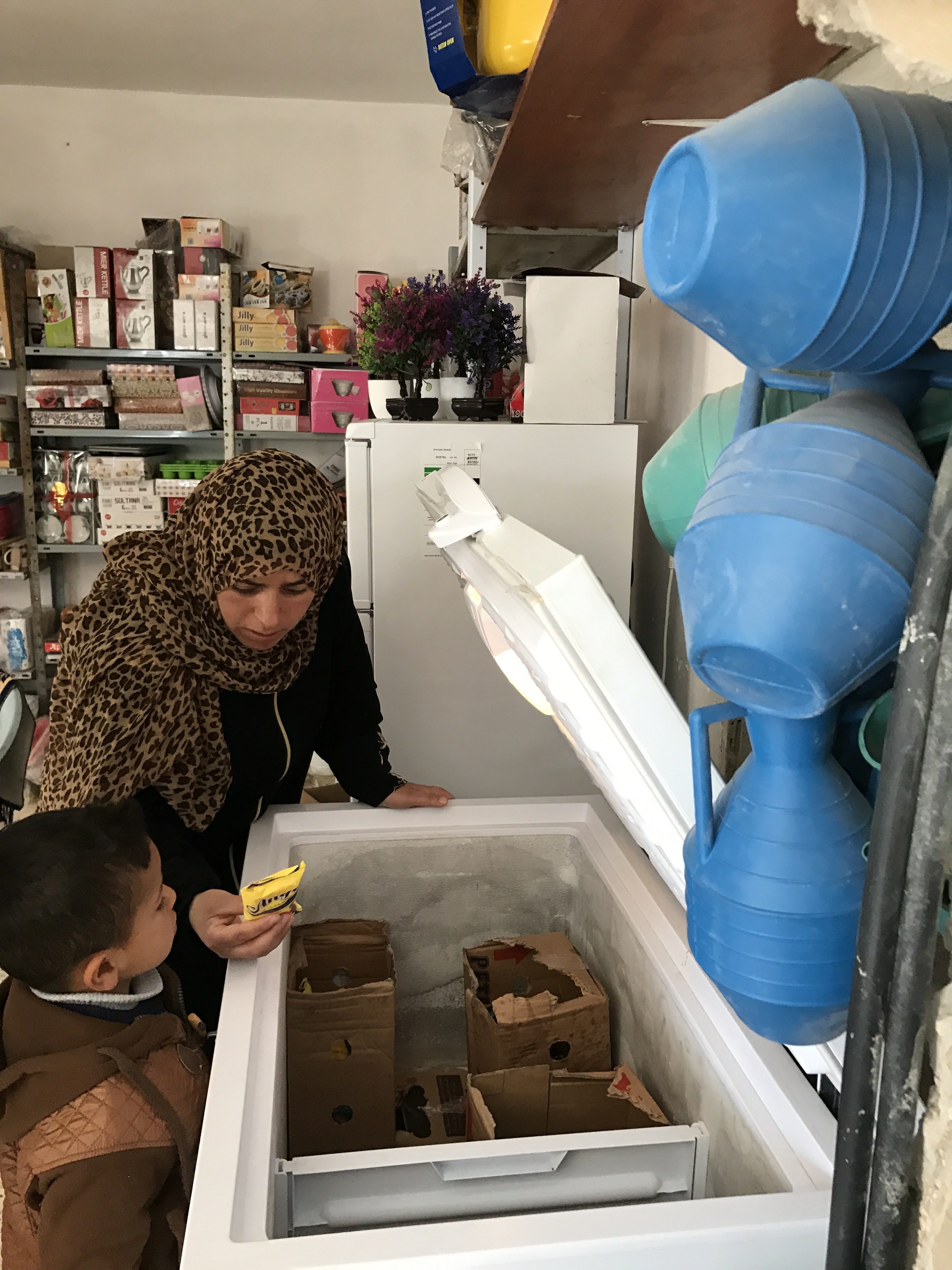

UPDATE #1, July 2017: Israeli government confiscates solar panels, vandalizes equipment
At 8 am on Wednesday, June 28, 2017, the Israeli military entered the village of Jubbet a-Dhib in Area C in the Bethlehem district — without prior warning and without having issued stop-work orders beforehand — and seized 96 solar panels and all of the electronics from the community’s solar energy micro-grid. The system, installed by Comet-ME with funding from the Netherlands Foreign Ministry, has been powering the village since November 2016.
Attorney Michael Sfard has called the seizure “an explicit violation of international law, which forbids occupying powers to damage humanitarian installations without providing alternatives.” Needless to say, in a radius of just a few kilometers from the village there are several illegal Israeli outposts that are connected to the Israeli electricity grid. You can read more about the story in Haaretz, the Dutch Algemeen Dagblat, the International Middle East Media Center, The Independent, and CleanTechnica.
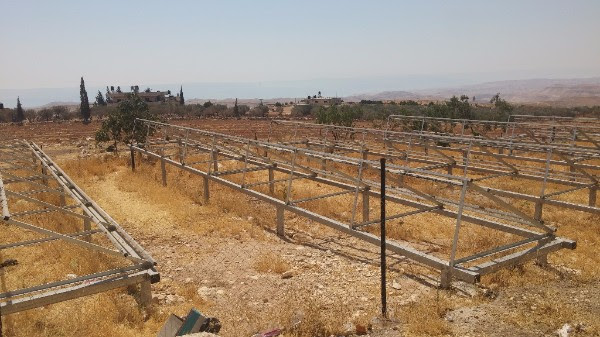
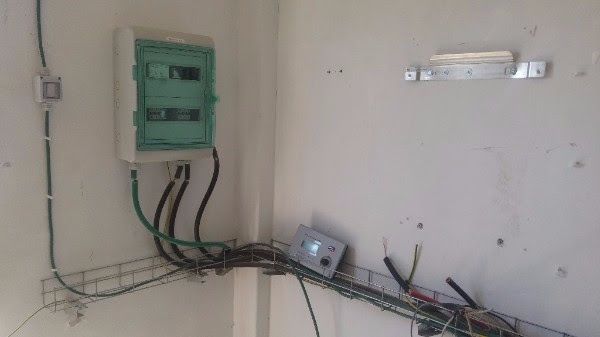
During the raid, the Civil Administration’s workers also caused considerable damage, both to the solar panels and to the electricity room – breaking panels, cutting many electricity and communication cables, and ripping the components off the walls of the electricity room – with the clear intention of preventing the future use of the system.
Within a few hours of the raid, the Comet-ME team hooked up the village’s grid to its backup generator so as not to leave the villagers without lighting and refrigeration in the midst of a heat-wave. This is, however, a very temporary and unsustainable solution — financially, technically, and environmentally — that will leave the community in the dark before long. Comet-ME is making every effort — on the legal, diplomatic, and media fronts — to retrieve the seized materials and to restore power to the village as soon as possible.
Update #2, October 9, 2017
From Comet-ME: “Following concerted legal and diplomatic efforts, we have successfully retrieved the equipment for the microgrid in Jubbet a-Dhib, which was seized by the [Israeli] Civil Administration on June 28, 2017.
As of last week, the system has been reinstalled in its entirety, and power restored to the community of 160 women, children, and men.
“We would like to take a moment to thank our partners at the Netherlands Foreign Ministry for their untiring diplomatic efforts, our legal counsel Attorney Michael Sfard and his office for writing a powerful legal and humanitarian petition, social anthropologist Shuli Hartman for contributing her indispensable expert opinion on the repercussions of the confiscation of the system for the community, the Comet-ME team for the lightning quick operation to restore power, and above all the people of Jubbet a-Dhib and in particular the Women’s Council, who have weathered this most difficult summer with dignity and persistence.”
Following are a few photos of the Jubbet a-Dhib microgrid re-install. Photo credits: Ryan Brand, Abd Qabajah.

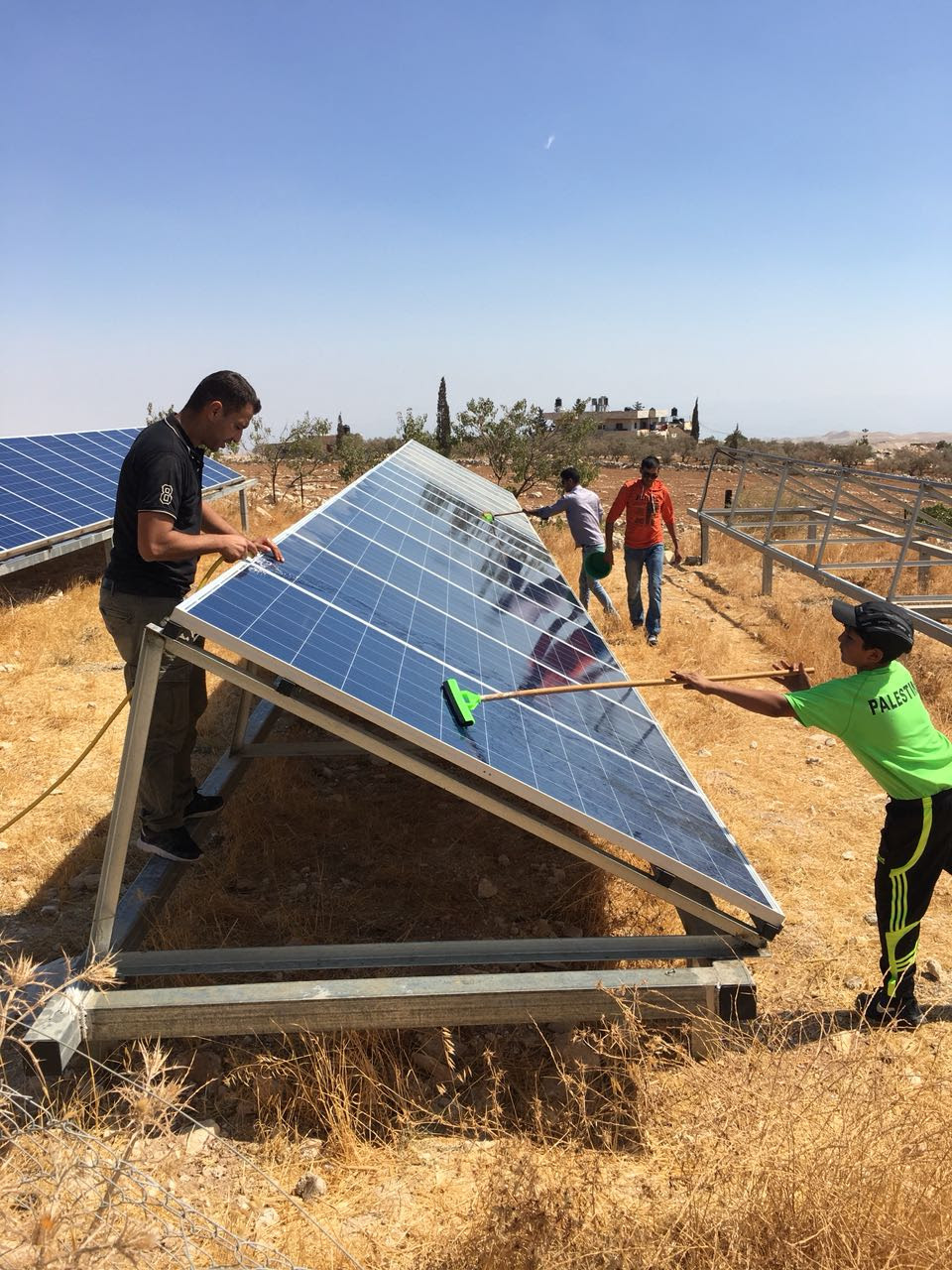




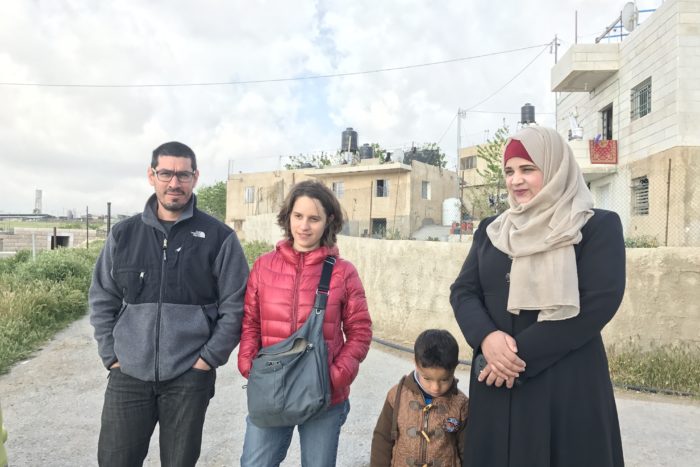
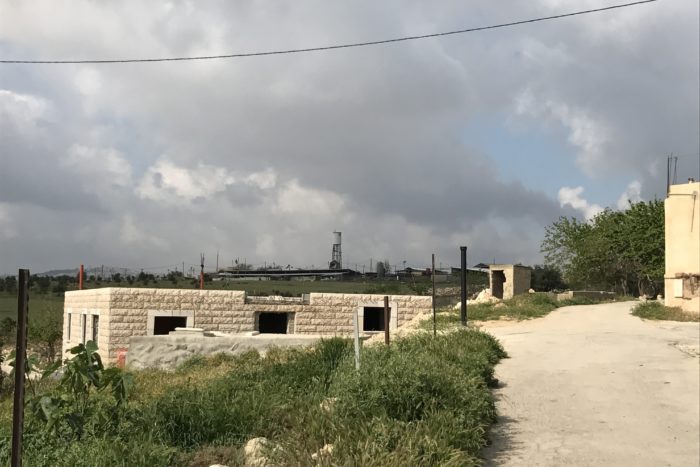
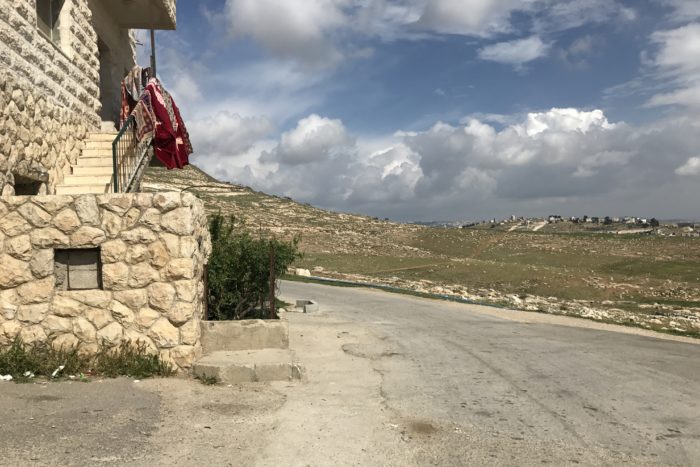
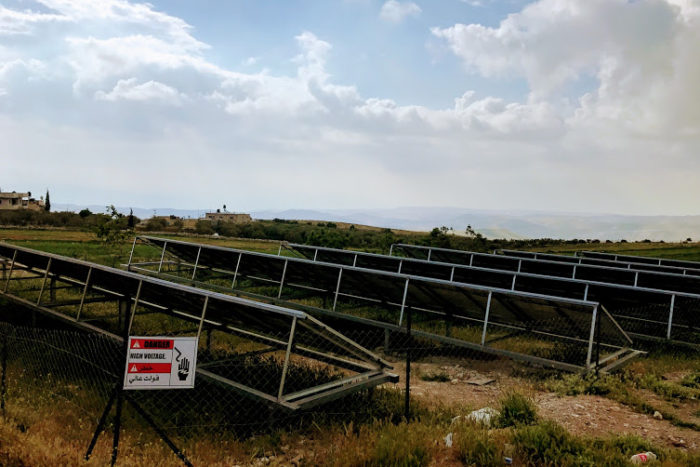
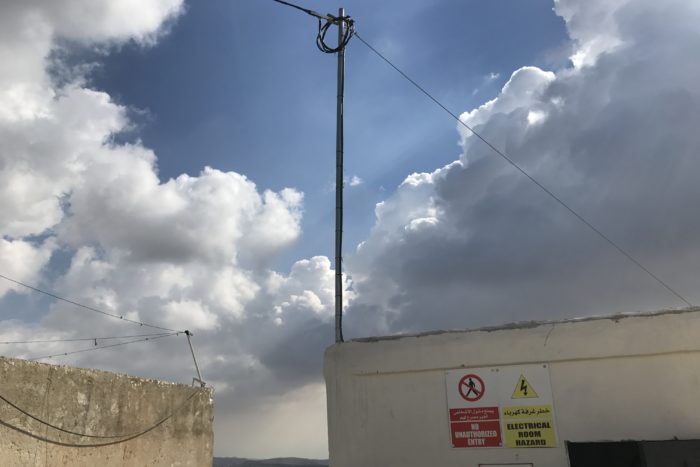
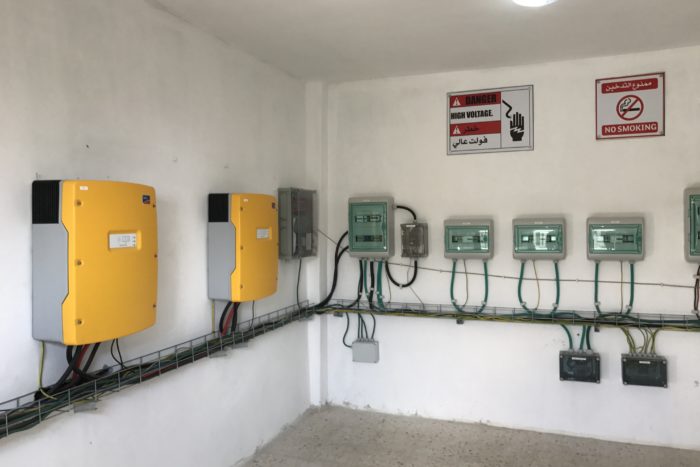

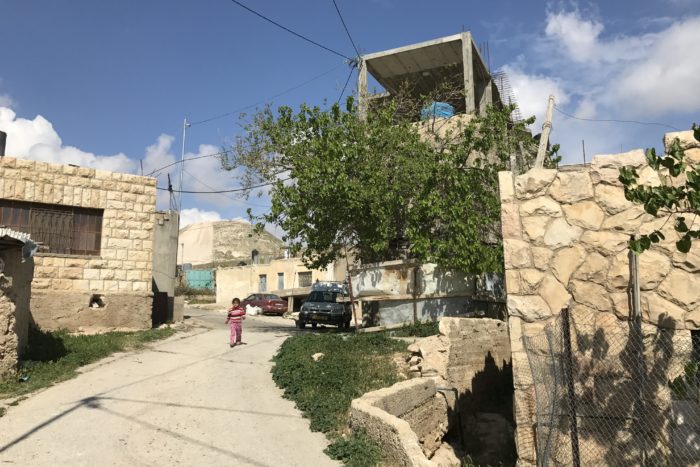
Energy access is not providing energy in itself, but energy services. Great story, I would be delighted to get more news from this project itself, specially from the perspective of women’s committee. What are women doing in the time saved by electricity services? What are the new possibilities opened by energy access that women grabbed and/or created?
Thank you for your comment. I will definitely provide more news about this project as it becomes available. Those are interesting questions. The women are, of course, running the microgrid on a day-to-day basis and working on upgrades (not microgrid related, but their newest project is procuring and installing solar street lights so residents can be outside after dark). They have freed up time to care for themselves and their families as well. In Palestine, women are often required to be the breadwinners (unemployment is staggeringly high) in villages and refugee camps, creating fair trade items to sell, for instance. However, with this village’s proximity to the checkpoint and Jerusalem, unemployment is not the main issue for the village’s inhabitants. I highly recommend the Comet-ME website for stories about their other projects as well.
Sadly, the news I have to share is bleak:
At 8 am on Wednesday June 28, 2017, the Israeli military entered the village of Jib a-Dhib in Area C in the Bethlehem district — without prior warning and without having issued stop-work orders beforehand — and seized 96 solar panels and all of the electronics from the community’s solar energy micro-grid. The system, installed by Comet-ME with funding from the Netherlands Foreign Ministry, has been powering the village since November 2016.
Attorney Michael Sfard has called the seizure “an explicit violation of international law, which forbids occupying powers to damage humanitarian installations without providing alternatives.” Needless to say, in a radius of just a few kilometers from Jib a-Dhib there are several illegal Israeli outposts that are connected to the Israeli electricity grid. You can read more about the story in Haaretz, the Dutch Algemeen Dagblat, the International Middle East Media Center, and in the Independent.
Photos of the destruction have been added at the bottom of the post.
An amazing inspiring story.
We think so, too, thanks!